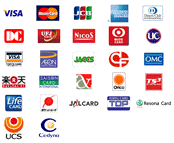Usage price and meter prices: Calculate the price based on usage classes. Pricing formulas allow the pricing module to determine item prices based on items based on the following: Configuration entities: price lists, qualifiers, modifiers, products, formulas, and price attributes Formulas are mathematical expressions that the pricing module uses to determine item list prices and discounts that apply to those items. You can use them to: Define a formula to dynamically calculate the price based on a simple or complex formula or to create a price relationship (for example.B. the price of item A is the price of item B + $20). This would then be the new formula for a reduction. What happens when the pricing is called is as follows: – The list price is derived from the price list – The shipping costs are calculated, resulting in a Bucket 1 subtotal of List Freight – The Bucket 2 modifier is triggered to reset the selling price to the list price, resulting in another modifier that removes the shipping costs. Oracle Advanced Pricing provides the flexibility to meet the needs of complex pricing situations for a range of demanding industry requirements, including: List Price: The price of the item in a specific price list to which you have attached a formula. List price and price list item are supported plan types for extended prices. In fact, I do not think I can clarify my point of view. Let me illustrate this with examples. Since taxes have been removed from pricing, we now need to add a modifier to handle the added freight. Create a pricing formula called RESTORE LIST PRICE, whose formula is “1” and whose component 1 is just the list price.
Create a modifier named RESTORE LIST PRICE, which is automatic, applies to all items, the method is New Price and whose formula is RESTORE LIST PRICE. Assign this modifier to pricing bucket 2. You also need to redefine all your freight cost modifiers to become Pricing Bucket 1. Create a pricing formulaYou can configure and update formulas and formula lines in the Price Formulas window. A formula is a valid mathematical expression that is used to determine the list prices of items and the discounts applied to those items. Formula lines contain details about each part of the formula. Note: The Create Formula Package concurrent program must run after you configure or modify a formula to improve performance. This program can be accessed from the Tools menu in the Plan Configuration window. The formula can contain:• Parentheses: ()• Mathematical operators: +, -, /and *• Built-in functions: NVL, SQRT, and MOD• Operands: Operands are step numbers that you specify in more detail.
You can use as many step numbers as you want, up to the limit of the field. You can repeat a number of steps in a formula, para. B example 1+2*2. Note: An operand is not a numerical constant. To use a numeric constant in a formula, you can:• Create a number of steps in the formula expression.• Assign the numeric constant to the number of steps in a formula line. Prices in absolute values, percentages of other prices or in formulas Here is the heart of the problem with what you want to achieve. You want to reduce the list price of the sales order by using a dynamic formula that requires an adjustment to the sales order line. Unfortunately, there is no adjustment when the list price is set for the first time. Decide if your prices are at the level of a single product, in the product hierarchy, or both.
Also determine the ranking levels in your organization. Determine if you are basing list prices on the volume purchased. Plan the number of price lists. For best performance, reduce the number of price lists and price list lines using a combination of qualifiers, modifiers, price attributes, and formulas. The pricing engine can calculate different selling prices depending on how you group your discounts into buckets. Schedule your cascading discounts so that you can assign discounts to buckets based on the subtotal to which each discount should be applied. For features that are not available in HTML, you can still use the forms-based user interface to configure and manage pricing features and functionality, as in previous versions. If an entity cannot be created in HTML, such as .
B qualification groups, you must use the forms-based user interface for these tasks. Oracle Advanced Pricing provides an additional layer of security (in addition to existing functional security) called price security. Pricing security can be used to restrict pricing activities such as updating and displaying pricing entities to users who have been granted certain access rights. Pricing security is configured and managed in the HTML user interface by a user in charge of the Oracle pricing administrator. For more information about pricing security, see the Oracle Advanced Pricing Implementation Guide, Pricing Security section. It`s important that you understand how the pricing engine works with these metrics so you can set them to reflect your business needs. Analyze all your discounts, promotions, and fees related to these features. Set the profile option `QP: Get Custom Price Customized` to `Yes`. If the profile is set to Yes, the pricing engine performs this function when it is added to a formula.
What is the product hierarchy and what price attributes relate to this item or service? An example of a product hierarchy with price attributes is: All B-grade plastic items get a 50 percent discount. .













